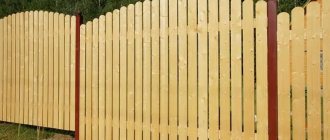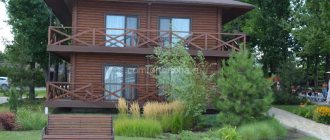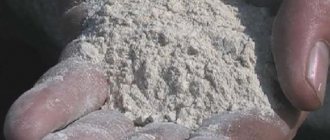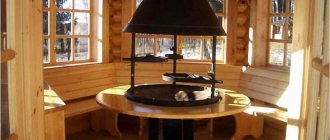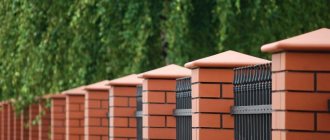Fastening and fencing of walls and slopes is a set of measures aimed at preventing landslides and soil shedding when constructing pits.
These measures are necessary, since slopes and walls are under constant influence of mechanical, hydrological, and weather factors. This is especially evident in low-density soil conditions.
Ground collapse can lead not only to damage to construction sites, structures, and expensive equipment, but also to accidents involving the death of people.
Therefore, regulatory documents establish strict requirements for methods of strengthening walls, as well as a strict ban on the presence of workers in pits that do not have slopes or reinforced walls.
Regulatory requirements for arrangement
Strengthening walls when creating pits is regulated by building codes and regulations. Thus, SP 381.1325800.2018 regulates the rules for the calculation and design of retaining structures, which include devices for strengthening pits.
SNiP 12-04-2002 defines general safety requirements for excavation work, in particular, it establishes the required steepness of slopes and the maximum permissible depth of excavations, which
do not require the installation of a strengthening system:
- one meter is the maximum permissible pit depth for sandy soils;
- 1.25 m for sandy loam;
- one and a half meters for clays and loams;
- up to two meters for high density soils.
For pits with a depth of less than three meters, the strengthening system must be made in accordance with the standard design. At greater depths and in difficult hydrogeological conditions, strengthening is done in accordance with an individual project. The condition of fastenings, slopes, and walls should be checked regularly.
Arrangement of slopes is also one of the methods that helps prevent the walls of the pit from collapsing . However, this requires a large amount of excavation work, which can significantly increase construction costs.
In places where there are many buildings and structures, for example, in cities, it is impossible to make slopes and therefore the walls of the pit are made vertical, and to prevent collapse, various methods of strengthening them are used.
Protection of the pit from watering and strengthening of slopes
Draw on a diagram and describe the technology of one of the following options for protecting the pit from watering and strengthening slopes:
Option 1. Strengthening the slope by installing a 6 m long steel sheet pile.
Option 2. Strengthening the slope by installing bored reinforced concrete piles of circular cross-section with a diameter of 0.3 m and a length of 6 m.
Option 3. Strengthening the slope by driving reinforced concrete piles with a square section of 0.3x0.3 m and a length of 6 m.
Option 4. Protection against flooding of the pit by freezing the soil.
Option 5. Water reduction using wellpoints.
Option 6. Water reduction by installing a drainage ditch.
Option 7. Construction of a sewage pumping station by installing a sinkhole with a diameter of 6 m and a depth of 8 m.
Option 8. Development of a pit with a plan size of 4x4 m for the foundation of the bridge support under water at a depth of 4 m using a caisson method.
Option 9. Strengthening the slope with wooden panels.
Option 0. Strengthening the slope using the “wall in soil” method.
Installation of a pile foundation for a reinforced concrete foundation
Draw schematically and describe the technological process of installing a pile foundation for the foundation:
Option 1. Installation of drilled injection piles with a diameter of 0.6 m and a length of 12 m.
Option 2. Driving reinforced concrete piles 12 m long with a cross-section of 0.4x0.5 m using a diesel hammer.
Option 3. Driving composite reinforced concrete piles 15 m long (9+6) with a cross-section of 0.4x0.4 m using a diesel hammer.
Option 4. Driving round steel piles with a diameter of 0.5 m and a length of 10 m by vibration.
Option 5. Driving box-section steel piles with a cross-section of 0.3x0.6 m and a length of 10 m using the method of undermining (eroding the soil).
Option 6. Driving reinforced concrete piles with a cross section of 0.35 x 0.35 and a length of 6 m using the indentation method.
Option 7. Installation of bored piles with a diameter of 0.7 m and a length of 8 m.
Option 8. Construction of wooden piles 8 m long with a diameter of 0.3 m.
Option 9. Features of the pile foundation:
a) under a strip foundation;
b) glass-type foundation.
Option 0. Installation of a reinforced concrete grillage on a pile base in the form of a solid slab 0.8 m high.
4.1.3 Equipment and technology for constructing a foundation made of prefabricated and monolithic concrete (advantages and disadvantages; areas of suitable application).
5 Requirements for completing a course project
The explanatory note should be made on 15-20 pages of A4 format, and the illustrative part - on one sheet of A1 format.
Structure of the explanatory note:
— title page (Appendix A);
— assignment for a course project (completed in accordance with Appendix B);
— abstract (Appendix B);
— list of sources used.
Each section of the explanatory note should begin with text justifying the problem being solved or formulas. Then show the calculations (including in tabular form). End the section with a brief conclusion.
The illustration part of the course project is done manually in pencil or on a computer (AutoCAD program) and must contain:
— technological schemes of earthworks;
— linear schedule of earthworks;
Typical methods for strengthening walls
To prevent shedding and sliding of the soil when creating pits, wall fastenings should be installed. Excavations with vertical walls more than 1-2 meters deep - the more precise value is determined depending on the type of soil - must be reinforced.
The method of fastening is specified by the work plan (work plan). Its choice depends on the size of the pit, the type of soil, the presence of groundwater, as well as the nature of the construction itself, for example, the use of heavy equipment causes vibrations that can lead to collapse.
It is recommended to strengthen the walls of the pit using equipment. If they are not available, then it is allowed to manufacture the necessary elements on site.
They must meet the following criteria:
The thickness of the boards used is not less than 4 cm for soils of natural moisture (except for sandy ones) and not less than 5 cm for soils of high humidity.- The racks must be mounted at a distance of no more than one and a half meters from each other.
- The vertical distance between the spacers should be no more than one meter.
- The top boards must extend above the top edge of the pit by 150 mm or more.
Existing strengthening techniques make it possible to create pits with vertical walls of great depth, while the likelihood of collapse is negligible.
Therefore, if you carefully comply with all the requirements imposed by regulatory documents for the construction of pits, then the structure can be made as strong and safe as possible.
Horizontal frame method
For dry soils that can hold sheer walls with a excavation depth of 2 meters, it is permissible to use a horizontal frame fastening method. In most cases, wood is used as a material.
Boards with a thickness of 50 mm or more are placed along the walls of the pit. Their task is to support the soil, preventing it from moving. The boards are fastened by surprise - a special element rests on two of them, located on opposite walls.
The spacers are mounted at a distance of one and a half meters in length and about half a meter in height from each other.
Both special frames and individual elements can be used as spacers : in the simplest version, these are round wooden blocks, slightly longer than the width of the pit, with a diameter of 12-18 mm.
Sliding tubular spacers are more effective; they are lightweight and easy to operate. Tubular frames can also be used.
The frame fastening method allows you to use a small amount of material and requires less labor compared to other methods. However, its use is limited and depends entirely on the stability of the soil on which construction work is carried out.
Horizontal solid
This fastening method is similar to the previous one, however, in this case, boards 50-60 mm thick are installed without a gap, close to each other . They are positioned horizontally - one on top of the other - and are fixed by vertically placed posts that press the spacers.
In this case, the racks are dug or driven into the bottom of the pit. Using a sledgehammer or hammer, a timber or board is driven into the ground next to the wall with several blows. The racks are installed at a distance of 2-3 meters from each other.
Then the spacers are installed. If these are adjustable tubular elements, then simply place them in the right place and adjust them to the desired length. If wooden elements are used as spacers, then they are made in length slightly larger than the width of the pit and “moved” into the desired position by hitting them with a hammer.
Horizontal solid fastening is used when the soil is dry, with a tendency to local sliding, or, if it is dense, when the excavation depth is more than three meters.
Also, continuous installation of boards is needed to strengthen walls on loose soils and soils of high humidity; in this case, the use does not depend on the depth of the pit.
The topmost board should be mounted so that its outer edge is higher than the edge of the pit. This is necessary so that the soil from the surface does not crumble inward.
Horizontal with gaps
Installation is carried out similarly to horizontal continuous fastening . The boards are installed on the soil walls one above the other with an interval of 20-40 cm, possibly more, depending on the characteristics of the soil.
When installing enclosing structures, to ensure a gap between the boards, it is necessary to use bosses or pads. They will hold the fastening elements temporarily until the spacers are installed. It is recommended to use boards 50x180 mm, and spacers with a diameter of 130 to 180 mm.
This method can significantly reduce the consumption of material for the manufacture of fasteners, however, it can only be used for a limited type of soil: dry and natural moisture with an insignificant influx of groundwater. Used when the pit depth is 3-5 meters.
Vertical solid
On loose, water-saturated, unstable soils, as well as in places with quicksand, vertical solid fastenings perform well. This method is highly reliable and allows you to reliably strengthen the walls of pits in difficult hydrogeological conditions.
To hold the boards in a vertical position, not only spacers are used, but also the cantilever pinching effect . A slot is made along each wall the size of the board thickness. The lower end of the board is placed into the created cavity.
Thus, the fence, placed along the entire perimeter of the pit, is securely fixed in the lower part. All that remains is to finally secure the boards by installing spacers.
With vertical continuous fastening, it is necessary that the walls of the pit are plumb, otherwise, even at a small angle of inclination, the spacers can jump up under the pressure of the soil.
The technology of this strengthening method implies that the pressure boards, which are directly affected by the spacers, are located horizontally. They are placed in the central and upper part of the wall. The spacers, together with horizontally located pressure bars or boards, form the frame.
Installation procedure:
- When the next section of the pit is dug, two such frames are placed at the bottom at a distance of one and a half to two meters from each other.
- The frames are temporarily secured using special guy wires.
- There is a gap between the wall of the recess and the frame; boards are placed there to form a recess. The boards must be installed simultaneously on both sides of the frame.
- Then the spacer frames are moved apart, clamping the vertical boards.
For additional reliability, spacers are sometimes installed in the lower part, but this is not necessary, since the lower edge is “pinched” by the soil.
Required distances between spacer frames:
- vertically up to one meter;
- horizontally about one and a half meters.
If the pit depth is 5 meters, then 4 spacers are used for each frame. If the depth is greater, then the number of spacers is increased to 5. The maximum excavation depth for this method is 6.5 meters, however, installing vertical boards turns out to be technically difficult even with a length of more than 4.5 meters.
Using inventory equipment
When strengthening the soil, inventory fastenings are often used . They come in different designs. A common feature is that they are all a set of collapsible sliding frames and special panels. The final structure consists of individual sections.
Inventory elements are pre-prepared devices, usually reusable. They can be either mass-produced or individually manufactured for a specific project or projects.
They are easy to use and can significantly reduce the time and labor required for installation, help save material, and make work safe.
To carry out the installation, you should perform the following sequence of actions:
- After the pit section has been dug, the frames are assembled.
- The frames are placed in a pit.
- Then all the necessary inventory panels are lowered into the excavation.
- The panels are laid in the gap between the frames and the wall on both sides to the entire depth of the pit.
- Next, the frame racks are moved apart by rotating special nuts. The frame presses the panels tightly against the walls.
- First, the procedure is carried out on the lower and upper shields, and then the spacer is activated at all intermediate levels.
- At the final stage, rigid linings are installed on the spacer frames, which help to increase the stability of the structure.
Sliding frames are made of metal, and inventory panels can be made of moisture-resistant plywood, steel, or bitumen-impregnated cardboard can be used to create them. The choice of shield type depends on the construction conditions and acceptable financial costs.
Most often, metal inventory ladder fastenings are used to strengthen excavations up to three meters deep made by earth-moving machines. There are specially designed systems that are designed to strengthen the walls of wide pits. Such devices are heavy and require the use of cranes for installation.
Typical dimensions of spacer frames are a height of about 3 m, a diameter of 6.3 cm. The panels used have a length of up to 3.2 m, a width of 60 to 100 cm. The walls of the pit must be vertical. Can be used on any, even the most difficult, soils.
Cementation
The most reliable methods of strengthening pits include cementation . This method is widely used in cases where work is carried out in densely built-up areas, where buildings are located very close and it is not possible to make a gentle descent to the bottom of the pit.
Cementation is also chosen for the reason that, unlike sheet piling reinforcement, it does not require work that causes strong vibrations and can lead to the destruction of the foundations of buildings surrounding the construction site. There are two types of cementation: dry and wet.
In the first case, a dry mixture of sand and cement is fed into a hose and moved due to the pressure of the air flow.
In this case, the speed of movement of the mixture reaches 65 m/s. In this case, water is supplied to the hose nozzle. During wet cementation, a ready-made solution is supplied to the hose, and compressed air is supplied to the nozzle , which produces splashing, which is necessary for uniform spraying.
With dry cementation, it is possible to achieve a layer thickness of 70 to 100 mm at a time. With the wet method, the maximum possible thickness is 30 mm.
The procedure for strengthening the walls of a pit using the cementation method:
- Creation of a pit, the soil is removed to a depth of one to three meters, and the walls are leveled to a state corresponding to the design documentation.
- A metal or polymer mesh is laid. It is mounted on slopes so that the concrete can remain on a vertical surface.
- The concrete mixture is sprayed layer by layer onto the mesh. It is supplied under pressure using special equipment.
- They drill inclined or horizontal holes and wells. The procedure must be done before the concrete sets.
- Reinforcement is placed in the wells, and then concrete mixture is supplied there. In this way, “anchors” are created that will help hold the soil.
- Another layer of concrete is sprayed.
Strengthening the pit using the cementation method is carried out sequentially. The procedure is repeated after deepening every 1-3 meters.
Sheet piling
This method is one of the most reliable methods of strengthening ; it is suitable for recesses of any width and shape. Wood, metal, and reinforced concrete structures of various shapes can be used as sheet piles to strengthen the pit.
>A popular material that is used to implement this method is Larsen tongue - a steel profile of a special shape.
To strengthen the walls, the sheet pile is immersed in the ground using one of three methods:
- impact driving;
- vibration method;
- pressing.
Pounding is used to strengthen pits located in the following types of soil:
- in weak sandy,
- in the dusty
- marshy,
- and also in cases where there is a high groundwater level.
Sheet piling is especially necessary if there is a danger of flooding of the pit. This method is recommended to be used when the depth of the object exceeds five meters.
Wall in the ground
The method is well suited for creating walls or foundations in both water-saturated and dry soils - loose, dusty and others.
Creating walls as a closed loop with subsequent waterproofing of the bottom allows you to reduce the number of special types of work associated with water depletion and freezing of the soil.
The absence of construction operations associated with vibration allows work to be carried out in cramped conditions, in built-up areas, in places with multiple underground communications without damaging nearby structures.
Work order:
- Strengthening the top of the soil to prevent it from collapsing during the operation of earth-moving equipment.
- Preparation of a bentonite, clay solution, which, during the creation of a pit, will create excess pressure on its walls, thereby preventing their destruction.
- Filling the top of the pit with mortar.
- Development of the soil to the required depth under the auxiliary solution, with its replenishment as necessary.
- Installation of reinforcement and filling with concrete mixture and displacement of auxiliary mortar.
- Formation of concrete walls with subsequent development of the soil remaining inside the structure.
- Arrangement of the bottom of the structure.
The “wall in the ground” device is suitable for creating objects up to 60 meters deep, while objects with a shallow depth (from 3 to 5 meters) are not economically feasible. To develop a pit, as a rule, grab equipment is used.
Difficulties may arise when using the method if the soil contains underground cavities, loose, silty areas , as well as solid inclusions that cannot be processed with excavation equipment.
conclusions
A site on a slope always looks better than a flat one - so much so that experts even create an artificial complex terrain. And terracing will solve many possible problems of such a site and will help to use its area with maximum benefit.
Our articles on how to make a retaining wall from natural stone, about different types of retaining walls, and how to choose material for retaining walls can help with this. Learn how to make retaining walls - gabions. We recommend reading our article about stone in landscape design, watch our video on how to properly make retaining walls.
Subscribe to our Telegram channelExclusive posts every week
Advantages and disadvantages of various methods
The simplest and cheapest are spacer methods for strengthening pits. The use of widely available wood makes it possible to produce the necessary wall reinforcement cheaply and in a short time.
However, horizontal and vertical methods of strengthening using backing, clamping elements, and wood spacers make the process of fixing the pit walls very labor-intensive. This is especially noticeable when working on loose and water-saturated soils.
If the soils are dry and dense, the pit size is relatively small, or this is a one-time job, then the use of these strengthening techniques is fully justified.
The use of special inventory equipment is economically justified in cases where it is necessary to regularly create small pits. In other cases, the manufacture of special equipment will be a waste of money and time.
Cementation is a reliable method of strengthening pits and is suitable for objects of almost any size located on any, even the most difficult, soils.
However, labor costs and costs do not allow this method to be widely used. It can be justified in areas with dense buildings, as an alternative to dynamic methods of strengthening pits, which cause destructive vibrations.
Although installing sheet piling reinforcement involves impact installation methods, this method of strengthening pits is the most economically feasible.
It is well suited for any soil, especially water-saturated ones, as well as for places with a lot of groundwater. Unlike grouting, where the material (reinforcement and concrete mixture) is lost forever, sheet piles can be removed and reused on other objects .
However, you will have to not only remove the sheet pile, but also transport it and store it somewhere - this is additional labor and additional costs. A universal method that allows optimal use of resources is a “wall in the ground.”
Unfortunately, the use of this technique requires the use of special equipment and materials, which does not pay off when constructing small objects on shallow foundations.
You will find all the most important and useful information about the pit and its development in this section.
Traditional methods
Traditional methods are used to strengthen slopes in areas where private residential buildings and dachas are built. In most cases, the same industrial measures are used, only more simplified so that they can be implemented.
Planting shrubs and trees
When strengthening slopes by planting trees and shrubs, it should be borne in mind that in these areas it will be impossible to cultivate garden crops. Therefore, the slopes on which vegetable beds are supposed to be constructed are best strengthened by terracing.
Construction of terraces
On a slope intended for growing vegetables, it is enough to cut terraces 1.5-2 m wide, which is enough to create beds. Moreover, the steeper the slope, the narrower the terraces will have to be made. The optimal height difference is 500-600 mm; the ledges can be reinforced with wooden boards, placed on stakes driven into the ground, or retaining walls can be built from stone, logs and other available materials.
Retaining walls
Retaining walls intended to strengthen terraces or constructed in places of large differences in the landscape of the site are best built from natural stone - slate, limestone, sandstone, etc. – dry method, that is, without the use of cement mortar. Seeds of perennial plants can be planted in the seams between the stones, which will later add a special flavor to the landscape of the site.
Geopolymer materials
To reinforce the soil on the slopes of a summer cottage, it is quite possible to use geotextiles, meshes, mats, geogrids, since strengthening slopes with the help of geopolymer materials does not present any difficulties even for non-professionals. These activities are best carried out in combination with other methods - terracing, installing retaining walls and planting trees and shrubs.
What materials are popular today?
- Geotextiles, geogrids, geogrids and a number of other geomaterials are effectively used in the construction of durable underground drainages, strengthening the surface layers of soil, and correcting deficiencies in the natural relief.
- Thanks to the affordable cost of geomaterials, simple installation and the ability to use local resources, developers are able to save significant money.
- The cost-effectiveness of geomaterials is to some extent determined by the ability to perform simple land management work by the developers themselves.
Types of geogrid
Before purchasing this material for decorating slopes and leveling the territory, it is recommended that you familiarize yourself with the structure and materials of the geogrid. When choosing, you need to consider several criteria:
- The polymer fabric is not subject to rotting;
- The material with a cellular structure stretches slightly after installation. The fact is that after filling the tapes increase one and a half times in size. That is why this material is preferred to be used to strengthen banks and slopes;
- They prefer to use a biaxial wave-type mesh as a basis for carrying out landscape projects on flat areas;
- Geogrid can be made from a thinner material such as geotextile. This model is used to create multilayer structures on the surface;
- Geogrid, a type of fine mesh, is used to strengthen the lawn and garden area.
Application area
Large natural stones are used:
- for laying road surfaces;
- creation of access roads;
- building cladding;
- strengthening slopes;
- construction of swimming pools and baths;
- laying garden paths, steps and terraces;
- landscape design.
The stone is also suitable for sidewalks. The anti-slip surface provides additional safety for pedestrians. Granite and basalt stones are particularly reliable and durable. The compressive strength is up to 300 MPa, and the water absorption coefficient does not exceed 0.5%.
Natural cobblestone is not afraid of frost and sudden temperature changes. Its color is gray, brown, yellow and even burgundy. It all depends on the presence of certain chemical elements, which give the multi-colored color.
Particular attention should be paid to landscape design, for which cobblestone is not only a beautiful, but also a cheap material. Its cost is almost 2 times less than that of boulders.
How do the rubble stone fractions differ in purpose?
Rubble stone or rubble are pieces of limestone, dolomite, sandstone and other high-strength rocks. The stones have an irregular shape, a uniform structure without delamination or cracks. One of the extraction methods is rock blasting and dividing the crushed stone into fractions. The size of the stones does not exceed 500 mm, weight – 50 kg.
The main area of application of rubble stone is construction. To achieve optimal strength indicators, inclusions of clay and dust particles should not exceed 1.5% of the total mass.
The bottle has an extensive list of advantages:
- high strength;
- frost resistance;
- environmental friendliness;
- wear resistance;
- durability;
- decorativeness.
The most popular fractions of rubble stone are 70–150 mm and 150–300 mm. Their areas of application overlap in some ways, but there are also specific features.
Areas of application of rubble stone of different fractions
70–150 mm
The most popular faction in construction. The main areas of use are the production of rubble concrete, the construction of powerful buried foundations, the construction of retaining walls that keep the soil from sliding and collapsing, and the construction of stone buildings.
The main advantages are that rubble is not susceptible to fungi and other microorganisms, is resistant to adverse environmental factors, is fire-resistant and does not support combustion.
A medium-sized quarry is excellent for strengthening the banks of rivers and standing reservoirs, preventing erosion of the coastline and the occurrence of landslides. It is used in the construction of hydraulic structures: dams, dikes, drainage structures; during the construction and reconstruction of bridges. The material is often used for constructing wells, sewer and drainage channels.
Small stones look advantageous in the decoration of small products and buildings: fireplaces, barbecues, garden gazebos, baths and saunas.
150–300 mm
Large rubble is used in the construction and repair of highways and when laying paved roads. It is considered the best material for the construction of large unheated buildings, massive stone fences and fences, and wall cladding.
Large rubble stones are used as filler for gabion structures. The material does not shrink and does not fall into the cells of the metal mesh; it holds its shape perfectly. Gabions with large butts strengthen sea and river coastlines, road embankments, slopes of railway tracks, and reinforce unstable soil masses.
Architects and exterior designers decorate pools, fountains, flower beds, garden and park paths with rubble stone. Large, intricately shaped stones decorate alpine slides, flower beds, rose gardens, and park lawns.
Some projects involve the simultaneous use of rubble stone of different fractions. This emphasizes the decorative nature of the structures.
In addition to dividing into fractions, rubble stone is classified into varieties: industrial, round, torn, bedded, slabby. The shape of the stones, together with the size, determines the scope of use of the material.
Advantages of gabion
This factory product is a product made in the form of a parallelepiped from a double-torsion metal mesh and filled with large stone or crushed stone.
- To make the gabion, the factory uses special galvanized wire, which also has a PVC coating. It is this that reliably protects this structure from corrosion, aggressive chemical environments and mechanical damage. Even heavy loads are not scary. The average service life can be more than 70 years. But this affects the cost.
- Therefore, you can make a gabion on your own. To do this, you will need reinforcement rods with a diameter of 6 mm, as well as electric welding. In addition, you need to stock up on a tape measure, a marker, an angle grinder, a chain-link mesh, a shovel and a wheelbarrow. Cobblestones will also be required.
- A design with dimensions of 80x40x80 cm is suitable for a small area. The reinforcing bars are welded together to form a rectangular structure. The width of the cells will depend on the diameter of the selected stones.
- Using a shovel, it is necessary to prepare and widen the slopes of the ditch. Only then can cages be placed along the entire shore.
- Each cell is filled with large cobblestones and, if necessary, several rows are installed at once.
- A chain-link mesh is attached on top for better fastening. To avoid the need to change it frequently, it is better to choose a mesh that also has a PVC coating. It can be easily reinforced from above with cobblestones. In addition, this gives the entire structure a good decorative look.
Gabions can last the longest, while they fit well into the ecosystem. Manufacturers guarantee at least one hundred years of service.

